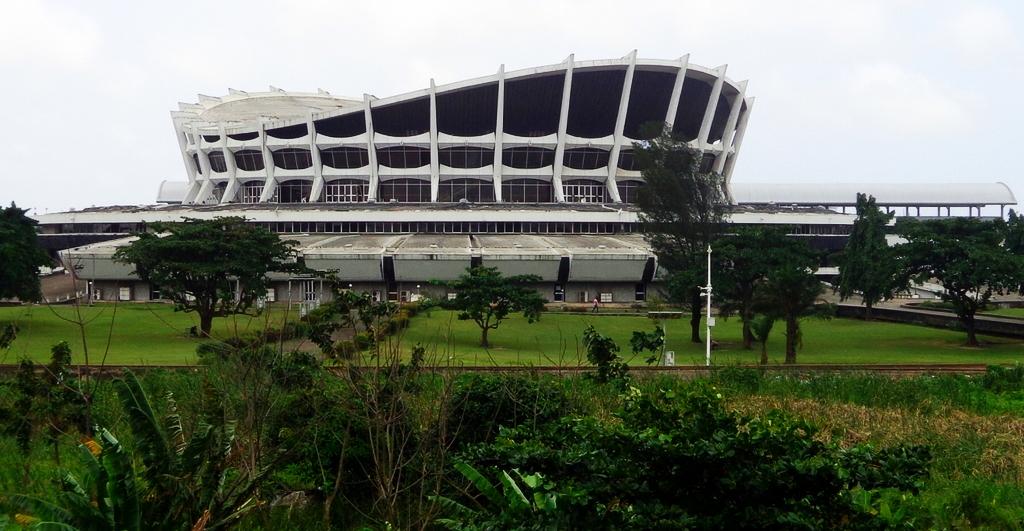10 Historical Sites in Nigeria and Their Location

Ever wondered about the hidden gems of Nigerian history? Well, buckle up because we’re about to take you on a whirlwind tour of 12 incredible historical sites in Nigeria. From ancient city walls to mysterious caves, Nigeria’s got it all. These aren’t just dusty old ruins; they’re living and breathing testaments to the rich cultural tapestry of this amazing country. Whether you’re a history buff, a curious traveler, or just looking to spice up your Instagram feed, these sites have something for everyone. So, let’s dive into the fascinating world of Nigerian historical landmarks!
Overview of Historical Sites in Nigeria
Ever wondered what makes a place “historical”? A historical site is like a time machine that takes you back to the past. It’s a location where something significant happened or where important structures still stand. These places tell stories of our ancestors, cultural heritage, and pivotal moments in history. Think of them as outdoor museums, preserving the essence of bygone eras for you to explore and learn from.
These spots can be anything from ancient ruins to battlefields or even buildings where famous people once lived. They’re preserved to help you understand and appreciate the rich tapestry of human history.
Each site tells a unique story, giving you a glimpse into the diverse cultures and traditions that have shaped Nigeria over the centuries.
Top 12 Historical Sites in Nigeria
We’re about to embark on a journey through time, exploring 12 of Nigeria’s most fascinating historical sites. From ancient walls to mysterious rock formations, these places will blow your mind. Each site has a unique story to tell, offering a glimpse into Nigeria’s diverse cultural heritage.
Olumirin Waterfall
You’ll find the breathtaking Olumirin Waterfall nestled in Erin-Ijesa, Osun State. This natural wonder, also known as Erin-Ijesa Waterfall, boasts seven stunning levels cascading down rocky cliffs. Legend has it that the waterfall was discovered by hunters in 1140 AD”. Another source has it that the tourist site was discovered by a woman called Akinla, founder of Erin-Ijesha town and a granddaughter of Oduduwa, during the migration of Ife people to Erin-Ijesa.
Today, it’s a popular tourist spot, drawing adventure seekers and nature lovers alike. As you climb the levels, you’ll be rewarded with panoramic views and the refreshing mist on your skin. Olumirin isn’t just beautiful; Its beauty and cultural significance make it a must-visit destination for nature lovers. It’s also culturally significant to the local Ijesa people.
The First Storey Building in Nigeria
You’ll find this historic gem in Badagry, Lagos State. Built by Anglican missionaries Henry Townsend and Carl Gollmer in 1842. The building was completed three years later, in 1845; it is Nigeria’s oldest-storey building. This historic structure stands as a testament to Nigeria’s colonial past. The building, which now serves as a museum, features a unique blend of European and African architectural styles. Its significance lies in its role as a pioneer of modern architecture in Nigeria and its connection to the spread of Christianity and Western education in the region.
National War Museum
You’ll find the National War Museum nestled in Umuahia, Abia State. This unique spot preserves Nigeria’s military history, focusing on the Civil War era.
Lt. General Theophilus Danjuma’s official visit to Yugoslavia in 1977 sparked ideas for the establishment of a national war museum. The Supreme Military Council of Lt. General Olusegun Obasanjo’s administration authorized the proposals that same year. Exploratory investigations for the museum’s establishment began, and the project was officially begun in 1985. The museum is located at Ebite Amafor in the Isingwu Autonomous Community of Umuahia North Local Government Area, which was also the location of the Voice of Biafra bunker during the war. The radio station remains intact, as does a subterranean former office and command post for Biafra’s Governor, known as the “Ojukwu Bunker.” It has three permanent exhibition galleries and an open-air gallery.
As you wander through, you’ll see an impressive collection of weapons, uniforms, and vehicles used during conflicts. It’s not just about artifacts, though; the museum tells stories of bravery and sacrifice.
Osun-Osogbo Sacred Grove
You’ll find this UNESCO World Heritage Site nestled in the lush forests of southwestern Nigeria. The Osun-Osogbo Sacred Grove has been a spiritual sanctuary for centuries, honoring the Yoruba goddess of fertility, Osun. As you wander through its 75 hectares, you’ll encounter stunning sculptures, vibrant shrines, and the serene Osun River. This cultural treasure not only preserves ancient traditions but also serves as a living testament to the harmonious relationship between nature and humanity. It’s a must-visit for anyone interested in African spirituality and art.
Ancient Kano City Walls
You’ve got to check out the Ancient Kano City Walls! These ancient mud walls, dating back to the 11th century, once encircled the entire city. Located in northern Nigeria, they’re a testament to Kano’s rich history. Stretching over 14 kilometers, these massive fortifications protected the city from invaders.
The Ancient Kano City Walls (Hausa: Ganuwa) were defensive walls designed to defend the people of Kano, an ancient city. The wall was built from 1095 to 1134 and completed in the middle of the 14th century. The Ancient Kano City Walls have been dubbed “the most impressive monument in West Africa”.
Today, they’re a UNESCO World Heritage Site, symbolizing Kano’s cultural heritage. While parts have crumbled, you can still marvel at sections standing 30 to 50 feet high!
Emir of Kano’s Palace (The Gidan Rumfa)
You’ll find the Emir’s Palace, a stunning architectural marvel, right in the heart of Kano City. Built in the 15th century, this royal residence has been home to Kano’s rulers for centuries.
The Gidan Rumfa, also known as the Gidan Sarki (“Emir’s House”), is Kano’s emir’s palace. It was built in the late 15th century in Kano, Kano State, Nigeria, with further alterations and additions lasting into the twentieth century. Since Rumfa’s reign, it has served as the residence of Kano’s traditional authority, and it was retained by Fulani jihadists who took over traditional authority in Kano in the early nineteenth century. Its current land area is 33 acres (130,000 m2).
As you approach, you’ll be awestruck by its massive mud walls and intricate designs. The palace isn’t just a pretty face; it’s a symbol of Kano’s rich cultural heritage and political power. Inside, you’ll discover a treasure trove of history, from ancient artifacts to colorful traditional ceremonies.
Tafawa Balewa Square
Located in the heart of Lagos Island, Tafawa Balewa Square (originally called “Race Course”) is a landmark you can’t miss. TBS was constructed in 1972 over the site of a defunct track for horse racing. Named after Nigeria’s first Prime Minister, this 14.5-hectare site has seen it all. You’ll find it surrounded by important buildings and bustling streets. It’s not just a tourist spot; it’s where Nigeria’s independence was declared in 1960. Today, it hosts major events and serves as a reminder of the country’s journey to freedom.
Oduduwa Grove and Shrine
You’ve got to check out Oduduwa Grove in Ile-Ife, Osun State. This sacred forest is where Oduduwa, the legendary Yoruba ancestor, is said to have descended from heaven. Oduduwa was the first Ooni (King of Ile-Ife) and was said to be the origin of the Yorubas. It’s a lush, mystical place that’ll transport you back in time. The grove is filled with ancient trees, shrines, and statues that’ll leave you in awe. For the Yoruba people, it’s not just a tourist spot; it’s a spiritual powerhouse. So when you visit, remember to show some respect and soak in the rich cultural vibes.
Ogbunike Caves
You’ll find the fascinating Ogbunike Caves, also called Ogba, tucked away in Anambra State, Nigeria. These ancient caverns have been around for centuries, serving as a hideout during wars and a spiritual site for locals. As you explore, you’ll be amazed by the network of tunnels and chambers, some reaching up to 5 kilometers long! The caves’ unique ecosystem and historical significance make them a must-visit destination, offering you a glimpse into Nigeria’s rich cultural heritage and natural wonders. Legend has it that the caves were discovered by a hunter named Ukwa from the Umucheke family of Ifite-Ogbunike. Legend has it that the caves were created by a deity, Ogba, who they believe lives within.
In ancient times, people went there to declare their innocence regarding an alleged crime. The guilty never returned. It was said that a woman undergoing menses could not enter this cave in the olden days as they were unclean.
Today, they’re not just a cool spot to explore; they’re a significant cultural site. Locals hold an annual festival there, and it’s even been recognized by UNESCO.
National Arts Theatre (Now: Wole Soyinka Centre for Culture and the Creative Arts)

You’ve got to check out the National Arts Theatre in Lagos! Built-in 1976, this iconic structure looks like a military hat from above. It’s located in Iganmu, right in the heart of Lagos. Inside, you’ll find a 5,000-seat main hall and two 700-seat cinema halls. It’s been the heart of Nigeria’s performing arts scene for decades. The theatre’s significance lies in its role as a hub for cultural events, showcasing the country’s rich artistic heritage. In July 2024, President Bola Tinubu renamed the National Arts Theatre in Iganmu, Lagos, in honor of Nobel Laureate Prof. Wole Soyinka.
The theatre has played a huge role in promoting Nigerian arts and culture. It has hosted countless performances, exhibitions, and events over the years. Despite facing maintenance challenges, it remains a symbol of Nigeria’s creative spirit. Though it’s faced some challenges, plans are underway to restore this cultural gem to its former glory.
River Niger Bridge

River Niger Bridge, or Onitsha Bridge, is a bridge that connects the southeastern and western regions of Nigeria across the Niger River. It’s this iconic structure spanning the mighty Niger River in Nigeria. Built back in 1965, it connects Onitsha in Anambra State to Asaba in Delta State. You’ll be amazed by its impressive 4,606 feet length and 36 feet width. This bridge isn’t just a feat of engineering; it’s a lifeline for trade and transportation between eastern and western Nigeria. It’s become such a symbol of unity and progress.
Cocoa House Ibadan

You’ve got to check out Cocoa House in Ibadan! This iconic skyscraper, built in 1965, stands tall at 26 stories in the heart of Dugbe, Ibadan’s bustling commercial district. It’s a symbol of Nigeria’s cocoa boom and was once the tallest building in Nigeria and the first skyscraper in West Africa. The 26-story building was initially called Ile Awon Agbe.
Today, it’s still a big deal, housing offices and offering killer views of the city. Fun fact: it even survived a major fire in 1985! Cocoa House remains a testament to Ibadan’s economic prowess and architectural ambition. Cocoa House symbolizes the economic boom from cocoa exports in the 1960s. Today, it’s still a major landmark and a testament to Nigeria’s architectural prowess.



